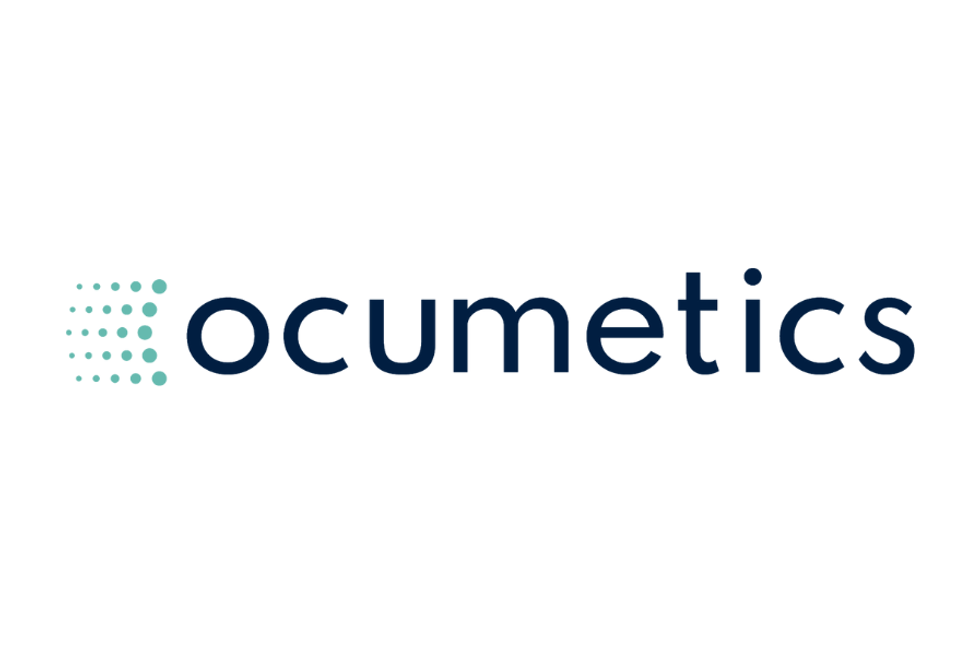- AustraliaNorth AmericaWorld
Investing News NetworkYour trusted source for investing success
- Lithium Outlook
- Oil and Gas Outlook
- Gold Outlook Report
- Uranium Outlook
- Rare Earths Outlook
- All Outlook Reports
- Top Generative AI Stocks
- Top EV Stocks
- Biggest AI Companies
- Biggest Blockchain Stocks
- Biggest Cryptocurrency-mining Stocks
- Biggest Cybersecurity Companies
- Biggest Robotics Companies
- Biggest Social Media Companies
- Biggest Technology ETFs
- Artificial Intellgience ETFs
- Robotics ETFs
- Canadian Cryptocurrency ETFs
- Artificial Intelligence Outlook
- EV Outlook
- Cleantech Outlook
- Crypto Outlook
- Tech Outlook
- All Market Outlook Reports
- Cannabis Weekly Round-Up
- Top Alzheimer's Treatment Stocks
- Top Biotech Stocks
- Top Plant-based Food Stocks
- Biggest Cannabis Stocks
- Biggest Pharma Stocks
- Longevity Stocks to Watch
- Psychedelics Stocks to Watch
- Top Cobalt Stocks
- Small Biotech ETFs to Watch
- Top Life Science ETFs
- Biggest Pharmaceutical ETFs
- Life Science Outlook
- Biotech Outlook
- Cannabis Outlook
- Pharma Outlook
- Psychedelics Outlook
- All Market Outlook Reports

Through the rise of bioelectronics and medtech, medical device manufacturers are claiming major market share.
Kris Famm, a VP of research at GlaxoSmithKline (NYSE:GSK, LON:GSK), sees a bright future for medical devices: speaking at FierceBiotech’s 2016 Executive Summit, he predicted they would move from “a last resort to an early line treatment.” In other words, the next generation of medical devices may replace molecular drugs as most people’s preferred form of therapy.
That might seem like an odd statement coming from a high-ranking executive at one of the world’s largest drug manufacturers. But GlaxoSmithKline is banking on this idea that medical devices are about to capture major market share—and so are many other companies.
That’s because the medical device industry is changing, and fast. Through the rise of bioelectronics and medtech more generally, pharmaceutical partnerships, and an increased emphasis on collaborative care, medical device manufacturers are clearing a space for themselves in the future of medicine.
The budding bioelectronics sector
GlaxoSmithKline is betting on one segment of the medical device market in particular: bioelectronics. These pill-sized implants work by adjusting nerve signals—but the industry has only recently made strides towards developing them.
“We had this kind of sexy concept,” Famm said, but the technological demands made realizing it difficult. Bioelectronic devices need to be small enough to be inserted through keyhole surgery and attached to a nerve and, as Famm remarked, “That is a real engineering feat.”
So GSK went to the experts. In 2016, the drug maker joined forces with Google’s Verily (NASDAQ:GOOGL) to form a spin-off bioelectronics centered venture: Galvani. Famm is now the president of that new company and expects to share clinical data within three years.
It would seem the bioelectronics business is gaining traction. Will 2017 see more companies add some eggs to this basket?
Pharma partners with medtech
The partnership between Verily and GlaxoSmithKline is symptomatic of a larger trend. “Pharma is becoming more dependent on medtech,” Dr. Munna Choudhury, a consultant with AlacraMed, told Life Science Investing News. “There are more and more deals taking place with not so traditional players.”
That’s because drug companies are looking for “value add”—technological extras that can give their product a competitive edge in the market. It’s why you see companies like Pfizer (NYSE:PFE) or Roche (OTC:RHHBY) developing mobile apps to accompany their drugs, for example. And it’s why GlaxoSmithKline is suddenly in bed with Google.
With blockbuster drugs becoming more and more rare, pharmaceutical companies are looking for other ways to gain a competitive edge and grow their revenues. For many, medtech looks to be a viable way of doing just that.
Fostering collaborative care
Medtech is also a major part of the collaborative care movement. That’s the idea that patient care needs to be more well-rounded, considering both mental and physical health, and should mobilize a whole care team in order to do so.
Of course, it can be difficult to coordinate that many people. Collaborative care involves numerous physicians, family members and caregivers, as well as the patient himself.
That’s where medtech comes in. Companies like Reliq Technologies (TSXV:RHT) are developing an entire collaborative care platform. The system helps patients schedule their medications, while looping in other members of the care team. So if Grandma forgets to take a critical dose, her neighbor can knock on the door and check in.
In that way, the collaborative care movement—plus the tools and devices that power it—prevents re-hospitalizations and empowers patients to retain their independence.
Cybersecurity: a growing concern
But all of this potential hinges on one major question: the issue of cybersecurity.
Medical devices will not become the therapy of choice unless patients and physicians feel safe and secure using them. As Choudhury told us, “If you’re going to get patience compliance with a device, you’ve got to have their buy-in.”
That buy-in won’t come unless patients are assured their medical devices are secure. And that trust may have been shaken in 2016.
This year, Johnson & Johnson (NYSE:JNJ) became the first medical device manufacturer ever to warn customers about a hacking threat. Meanwhile, St. Jude Medical (NYSE:STJ) saw its stock plummet after allegations that their cardiac devices had serious security vulnerabilities.
“Security experts have to assure us that our data can’t be hacked,” Choudhury said. “That’s the big challenge going ahead.”
Still, she remains positive about the viability of these products and thinks their potential is more impressive than the obstacles: “We’re moving forward with very innovative devices—diagnostic pills, smart inhalers, bioelectronics—and it would be a shame if these did not progress because of data privacy issues.”
—
One thing’s for sure—this isn’t your mother’s medical device market. Robotic surgeons, artificial organs: this stuff seemed like sci-fi not that long ago. But they’re fast becoming a reality.
And with this innovation comes a change in perception. Medical device manufacturers are proving their products shouldn’t be seen as a last resort for the desperately sick. Instead, they’re a first-choice option—ones that may soon overhaul the healthcare landscape.
Don’t forget to follow us @INN_LifeScience for real-time news updates.
Securities Disclosure: I, Chelsea Pratt, hold no direct investment interest in any company mentioned in this article.
Top Medical Device Trends for 2016
By Morag McGreevey
The $3.2-trillion healthcare industry is set to go through a big shift in 2016, and the medical device sector is at the heart of this transition.
As healthcare becomes increasingly decentralized, mobile apps and other DIY healthcare devices are taking center stage. However, this medical device trend brings with it a certain set of risks — in particular, the threat of cyber breaches is looming large in consumers’ minds. In 2016, medical device companies will have to balance inroads into the mobile healthcare space with a proactive approach to cybersecurity.
Increasingly mobile healthcare
The healthcare field is increasingly going mobile, and medical devices are at the heart of this transition. PwC states that the adoption of health-related smartphone apps has doubled in the past two years, with 16 percent of all smartphone owners using them in 2013 and 32 percent using them in 2015. 2016 will see continued growth as healthcare turns more and more towards these user-friendly, DIY medical devices.
Furthermore, a PwC Health Research Institute (HRI) survey reveals that 60 percent of patients would be willing to have a video visit with a doctor through their mobile phone, while 21 percent have used their phone to order a refill of a prescription. This emphasis on remote wireless connection rather than face-to-face connection is radically transforming the medical device industry.
While these statistics relate exclusively to mobile devices, the world of remote medical devices is virtually infinite. Doctors are literally distancing themselves from patients, and are feeling more comfortable discharging patients from the hospital and monitoring them using take-home medical devices. The mobile revolution is just beginning, and it’s set to transform the entire healthcare field.
Wearable medical technologies promote compliance
Not to be confused with mobile healthcare, wearable medical devices is a trend that is on the rise. These devices provide doctors with remote patient monitoring, and make it easier for the patients to get medical results in between those infrequent doctors appointments. While this technology already has a foothold in the market– for instance, constant glucose monitoring for diabetics– market watchers will see a more advanced type of wearable technology start to roll out.
Investing News Network recently spoke with Waqaas Al-Siddiq, founder and CEO of Biotricity (OTCBB:BTCY), a remote patient monitoring company that has developed a wearable ECG monitor. Al-Siddiq noted that one of the greatest challenges faced by the doctors is patient compliance. In Al-Siddiq’s view, providing patients with a wearable solution that provides them and their doctors with the necessary feedback to address their medical condition is a big step in the right direction in promoting patient compliance.
MedGadget reported in January that the Zion Research expects the wearable devices market to generate revenue in the are of $7.8 billion in 2020, growing at a compound annual growth rate of over 15 percent between 2015 and 2020.
Growing concerns about cybersecurity
As mentioned, advances in medical devices are also raising significant consumer concerns about security. From pacemakers to infusion pumps to mobile apps, medical devices are becoming increasingly connected to the internet. According to the PwC HRI report, internet-connected healthcare products are expected to be worth approximately $285 billion by 2020.
However, with greater connectivity comes greater risk of cyber attack, and consumers are acutely aware of this connection. Consumers’ wariness is not unfounded: a successful medical device attack could cost significant amounts of money, allow attackers access to private medical data or, in the worst case scenario, harm or kill patients reliant on the targeted medical device. The PwC HRI report states that more than half of consumers would avoid, or be wary of using, a connected medical device if a cyber breach was reported.
This concern over cyber breaches extends beyond the medical device sector to affect the healthcare industry more generally. The PwC HRI Report also notes that 40 percent of consumers would abandon or hesitate to use a health organization if it was hacked.
Therefore, in 2016 medical device companies will need to prioritize cybersecurity. Manufacturers will have to be proactive in this area in order to maintain customer loyalty and trust, and avoid the potentially devastating consequences of an attack. This prioritization may offer new, small-cap entrants into this market an advantage: these companies could focus on creating devices that have strong security protocols already embedded, unlike the larger, more established companies that may have to do retrofitting or upgrades in this area.
This is an updated version of an article first published on Medical Devices Investing News on December 20, 2015.
Securities Disclosure: I, Morag McGreevey, hold no direct investment interest in any company mentioned in this article.
Outlook Reports
Featured Medical Device Investing Stocks
Browse Companies
MARKETS
COMMODITIES
| Commodities | |||
|---|---|---|---|
| Gold | 2301.86 | -2.04 | |
| Silver | 26.57 | -0.10 | |
| Copper | 4.53 | +0.04 | |
| Oil | 78.83 | -0.12 | |
| Heating Oil | 2.44 | 0.00 | |
| Natural Gas | 2.03 | -0.01 | |
Investing News Network websites or approved third-party tools use cookies. Please refer to the cookie policy for collected data, privacy and GDPR compliance. By continuing to browse the site, you agree to our use of cookies.


